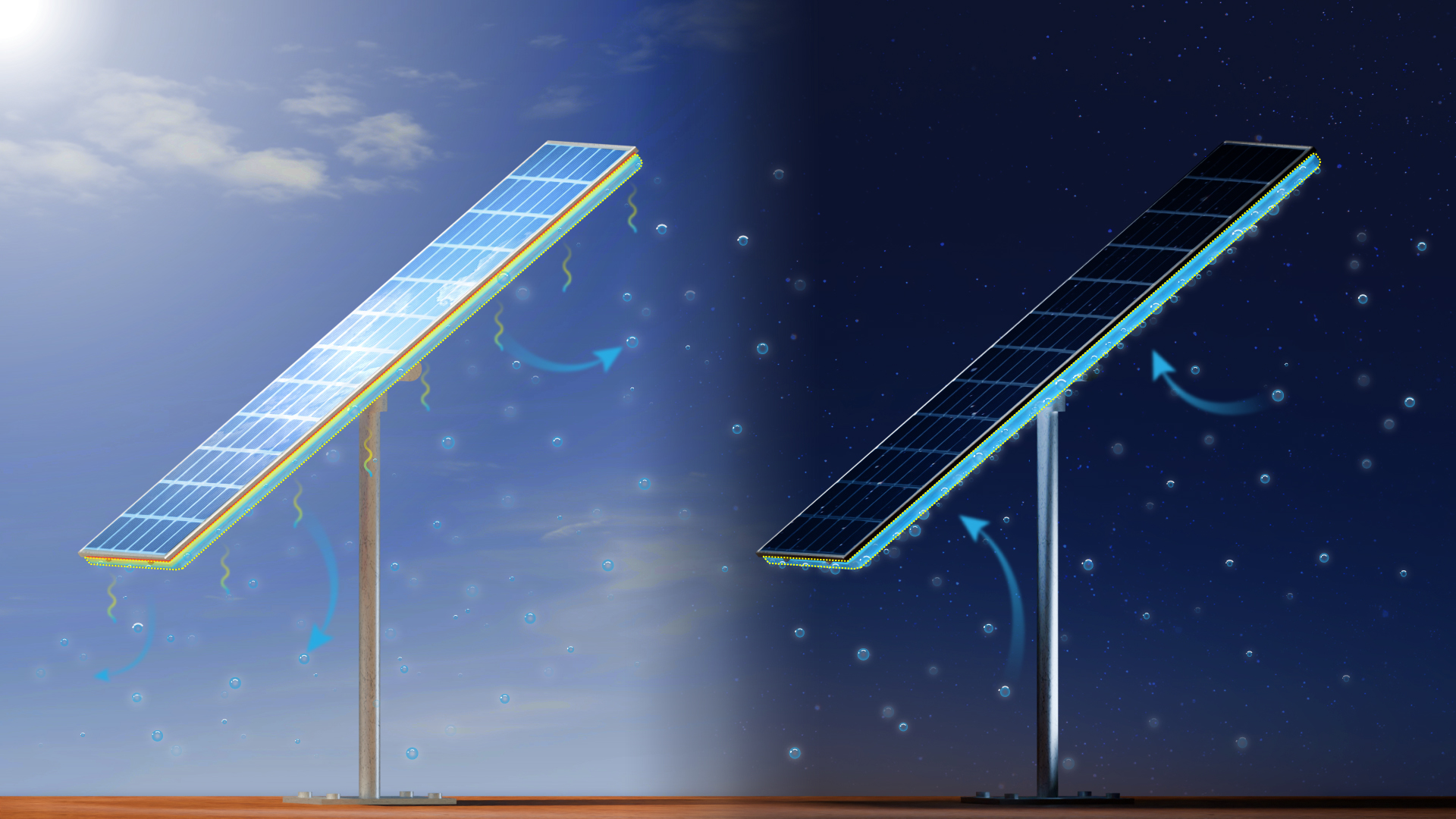New cooling technology raises power and longevity of solar cells

Saudi institutes create composite material that increases the power output of solar cells in Saudi Arabia by 12.9%
Composite material keeps solar cells cool using air moisture and no electricity to extend solar cell lifetime more than 200%
A team of international researchers led by King Abdullah University of Science and Technology (KAUST) and including researchers from King Abdulaziz City for Science and Technology (KACST) has developed a new composite material that enhances the performance of solar cells. Solar cells with the material functioning for weeks in the Saudi Arabia desert showed higher power output and a longer operation time than solar cells without. Additionally, the material is cheap to fabricate and reduces the cost of maintaining solar cells. The study can be read in Materials Science and Engineering: R.
Solar energy is a major part of Saudi Arabia's commitment to a net carbon economy but comes with major challenges. Commercial solar panels convert about 20% of the sun's rays into electricity. The rest is absorbed as heat or reflected. Moreover, the heat reduces the performance and lifespan of solar cells, meaning the cells must be replaced sooner than otherwise. Cooling the solar cells, therefore, is necessary, but cooling systems like fans and pumps themselves need electricity. Passive cooling, on the other hand, does not.
"We specialize in nanomaterials that enable passive cooling. These materials are thin and can be placed on different systems that require cooling to operate, like greenhouses and solar cells, without affecting performance," said KAUST Professor Qiaoqiang Gan, who led the study.
In the new study, which was done through the KAUST Center of Excellence for Renewable Energy and Storage Technologies, Gan and his colleagues prepared a composite material that absorbs air moisture at night and releases it during the day. The scientists found that adhering the material to solar cells operating in coastal Saudi Arabia for weeks keeps the cells cooler while increasing their power output and lifespan. Plus, passive cooling reduced the cost of electricity generation by the solar cells by 18%.
In addition to Saudi Arabia, experiments were done in some the coolest parts of mainland United States under rainfall to prove that that the passive cooling technology works in any environment.
Gan tested the composite material on solar cells provided by KAUST Professor Stefaan De Wolf, whose research team has regularly achieved world records in solar cell performance through their customized designs.
"This work is an excellent example of combining different expertise at KAUST. We tested the new cooling technology on top performing solar cells in multiple environments and saw excellent results in every case," said De Wolf.
Professor Abdulrahman AlBadri, Senior Researcher and head of the National Center for Nanotechnology and Advanced Materials at KACST, affirmed that this study aligns with KACST’s role in supporting the Kingdom’s Vision 2030 energy sector goals, which aim to increase the share of renewable energy in total electricity production.
He said: “The developed material has proven effective in solar cell applications in general, particularly in solar cell systems developed in KACST laboratories, where the temperature of the cells becomes extremely high due to concentrated light.” He added that the material has other applications, such as light emitters, which typically suffer from reduced efficiency at high temperatures. Preliminary studies on these applications have shown promising results.
For his part, Dr. Abdullah AlMoqbel, Director of the KACST-University of California, Santa Barbara Joint Center of Excellence for III-N Semiconductors and Photonics, and co-author of the study, emphasized that as a national laboratory, KACST places great importance on research conducted in cleanroom laboratories, in line with national priorities in the fields of energy and industry.
He added that the developed material offers a low-cost solution to cooling challenges in solar energy projects within the Kingdom and internationally while unlocking new possibilities for lighting and laser technology applications.
Including CREST, KAUST has launched four CoEs that conduct research on priorities of the Kingdom: AI, food security, renewable energy, and smart health.

